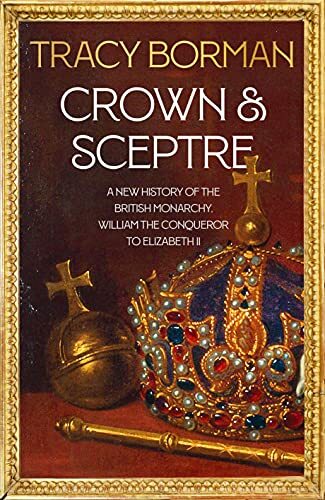Moniek Bloks's Blog, page 134
October 26, 2021
Consort Ruji – The theft of the King’s military seal
Consort Ruji has captured the hearts of China for many centuries. She has been praised for being a hero and saving the Zhao state from the powerful Qin state. She saved them by stealing the military seal from her husband, King Anli of Wei. Stealing the King’s military seal was an act of high treason. However, Consort Ruji thought the consequences were worth the risk in order to save the Zhao people.
Consort Ruji was born around 258 B.C.E.[1] Her early life is unknown. She became a concubine of King Anli of Wei, who ruled from 276-244 B.C.E.[2] She was the King’s favourite, and this special position helped save the Zhao state from falling into the Qin state’s hands.
During Consort Ruji’s lifetime, Qin was the most powerful state in China. It had a goal to conquer its neighbours: Wei, Han, Zhao, Chu, Qi, and Yan.[3] When the Qin army invaded a state, the state would often request help from one of its neighbours. Wei and Zhao were allies through a marriage alliance.[4] The Prince of Pingyuan, the younger brother of the King of Zhao, was married to King Anli’s sister.[5]
Therefore, in 258 B.C.E., the Qin state invaded the Zhao kingdom. They attacked Handan, the capital city.[6] The Princess of Pingyuan wrote letters to her brothers, King Anli and the Prince of Xinling, requesting Wei to come to Zhao’s aid.[7] King Anli immediately sent his troops under the leadership of General Jin Bi to aid Zhao. However, Qin threatened Wei that if they aided Zhao, then they too would be invaded.[8] This threat frightened King Anli, and he told General Jin Bi not to act until he gave further instructions to do so.[9] Thus, the Wei army waited while Handan grew dire. Both the Prince and Princess of Pingyuan and the Prince of Xinling asked King Anli to help, but the King did nothing.[10]
It was not until one of the Prince of Xinling’s advisors suggested to get Consort Ruji to go into King Anli’s bedchamber, where he kept all his military and state documents, to steal his military talisman.[11] Consort Ruji was indebted to the Prince of Xinling. When her father was killed, the Prince of Xinling killed her father’s murderer.[12] Consort Ruji did not hesitate to repay the Prince of Xinling. During one of her visits, she stole his military talisman and gave it to the Prince of Xinling.[13] As soon as it was in his hands, he immediately went to General Jin Bi and showed him the talisman. He told General Jin Bi that the King put him in charge of the army.[14] When General Jin Bi saw the talisman, he refused to believe it was the King’s orders.[15] However, the Prince of Xinling had the general killed immediately.[16] The Prince of Xinling took control of the army and saved Zhao.[17]
The King of Anli was mad at his brother’s deception, and the Prince of Xinling was forced to remain at Zhao for many years.[18] Consort Ruji’s fate remains unknown, for after the role she played in the important event, she is no longer mentioned in historical records.[19] However, her memory has not been forgotten. She is the subject of the popular play “The Military Credential” by Guo Moruo, where she is depicted as a woman of immense courage.[20] She is also the main subject in the popular China television series, The Legend of the Military Seal, where she is portrayed by the famous Yang Mi. However, her courageous, and possibly fatal treasonous act, saved a valued ally of the state of Wei and repaid a debt Consort Ruji owed to the leader who killed her father’s murderer.
Sources:
Eno, R. (2010). 1.7. Spring and Autumn China (771-453). Indiana University, PDF.
Fanzhong, Y. (2015). Notable Women of China: Shang Dynasty to the Early Twentieth Century (B. B. Peterson, Ed.; Z. Zhongliang, Trans.). London: Routledge.
Lee, L.(2015). Biographical Dictionary of Chinese Women: Antiquity Through Sui, 1600 B.C.E. – 618 C.E (L. X. H. Lee, Ed.; A. D. Stefanowska, Ed.; S. Wiles, Ed.). NY: Routledge.
[1] Lee, p. 69
[2] Lee, p.69
[3] Eno, p. 2
[4] Lee, p. 69
[5] Lee, p. 69
[6] Fanzhong, p. 34
[7] Lee, p. 69
[8] Lee, p. 69
[9] Fanzhong, p. 34
[10] Lee, p. 69
[11] Lee, p. 69
[12] Fanzhong, p. 35
[13] Lee, p. 70
[14] Lee, p. 70
[15] Lee, p. 70
[16] Fanzhong, p. 35
[17] Fanzhong, p. 35
[18] Lee, p. 70
[19] Lee, p. 70
[20] Fanzhong, p. 36
The post Consort Ruji – The theft of the King’s military seal appeared first on History of Royal Women.
Former Princess Mako and husband Kei hold press conference following wedding
Former Princess Mako and her new husband Kei Komuro have held a press conference following their wedding today. Although a question and answer session had been planned, it was changed at the last minute to the couple answering questions that had been submitted beforehand. The two both also read out a statement.
Embed from Getty ImagesPrincess Mako, now known as Mrs Mako Komuro, spoke first at the press conference held at a hotel in Tokyo. She said that she had had limited opportunity to speak publicly about Kei’s reported actions, and this may have caused misunderstandings. She understood that people had strong opinions about their marriage and deeply regrets having caused them trouble. She thanked those who cared about her as well as those who disregarded the false reports. Mako stated that she had urged Kei to study abroad. She also vowed to overcome any new difficulties ahead with Kei by her side.
Embed from Getty ImagesKei then said he hoped to create a warm family life with Mako and vowed to support her to the best of his abilities.
Embed from Getty ImagesMako’s parents and her sister Kako also released statements following the wedding. Her sister Kako wrote, “My sister has been and will always be very important to me. We had a good time together, and the presence of my sister often made me feel safe. I am sincerely grateful. Also, I am grateful that Kei Komuro cares about my sister. I was also very sad that the false information about the marriage was taken up as if it were true and that there was a lot of slander. Even under such circumstances, I have seen up close how my sister and Kei Komuro support each other. We are delighted that the two have been married today.”
Mako’s parents wrote, “Since we first announced that they were going to get married, something unexpected happened to us. We received various suggestions from around us, as well as voices of concern and opposition. It also had a considerable impact on the imperial family. We sincerely apologize for any inconvenience caused.”
Mako and Kei plan to settle down in the United States.
The post Former Princess Mako and husband Kei hold press conference following wedding appeared first on History of Royal Women.
October 25, 2021
A look at Japan’s Princess Mako
Princess Mako of Akishino was born on 23 October 1991 at the Imperial Household Agency Hospital in Tokyo as the eldest daughter of Prince Fumihito and Princess Kiko, now Crown Prince and Princess of Japan. She has a younger sister named Princess Kako and a younger brother Prince Hisahito.
Embed from Getty ImagesShe was educated at the Gakushūin School in her Primary, Girls’ Junior and Senior High School years. She spent two months at University College in Dublin to study English before going on to study at the International Christian University. She graduated in 2014 with a Bachelor’s degree in Art and Cultural Heritage. She went on to study art history at the University of Edinburgh for nine months. She later obtained her Master of Arts degree in Art Museum and Gallery Studies from the University of Leicester in January 2016. When she graduated, she stated that “her time at the University of Leicester had been “a wonderful experience.” She added that she would “like to express my sincere gratitude for having had the opportunity to pursue my studies in such a favourable environment. It has been a very fruitful year for me. I hope to apply what I have learned at postgraduate school in the future.” 1
Embed from Getty ImagesIn 2011, Princess Mako turned 20 years old and officially came of age. On her birthday, she received the Grand Cordon of the Order of the Precious Crown. Since that time, she has been attending official events as a member of the Imperial Family. Princess Mako has an interest in art and architecture, and she even visited Vienna for two weeks on a homestay program. After the 2011 Tōhoku earthquake and tsunami, Princess Mako secretly volunteered in the affected areas under the name Makoshi. She later said of that time, “I did not visit the disaster area in the form of giving sympathy like Their Majesties and other royal families, but I had the opportunity to help in the disaster area as one of the volunteers in the summer. I thought that I understood the situation of the earthquake through talking to the people concerned in Tokyo and media reports, but I realized that there are things that I would not understand until I actually went there. I did.” 2
Embed from Getty ImagesPrincess Mako’s engagement to Kei Komuro was announced in 2017, with the wedding initially expected to take place in November 2018. However, the wedding was postponed after it turned out that Kei Komuro’s mother was involved in a financial dispute with her former fiancé. Some of the money involved in the dispute had gone towards paying Kei Komuro’s tuition. The conflict meant that the public began to disapprove, and a media frenzy ensued.
“Weekly magazines and daytime TV shows are reporting frantically on this because it helps their sales and viewing figures,” Kaori Hayashi, a professor at Tokyo University, told The Guardian. “They are particularly critical of the Komuros because they are not fully protected by the Imperial Household Agency.” 3 Kei Komuro attempted to explain the dispute publicly, but the public remained unconvinced. He reportedly also offered to return the money.
As time dragged on, Kei Komuro went on to study Law at Fordham University in New York. He recently returned to Japan with a degree and a job at the New York law firm Lowenstein Sandler LLP. Unfortunately, Princess Mako was diagnosed with complex post-traumatic stress disorder following all the media scrutiny.
After Kei Komuro’s return to Japan in September 2021, it was announced that the marriage was set to go ahead for 26 October, but the couple would forego many of the traditional rites that usually accompany marriage. Under the current rules, female members of the Imperial Family formally lose the style of Imperial Highness and the title of Princess upon marriage to a commoner. They usually receive a lump-sum payment of approximately $1.3m to maintain their dignity, but Princess Mako requested not to receive this payment. Princess Mako met with her uncle and aunt, Emperor Naruhito and Empress Masako, in lieu of the traditional rites. She also visited the Imperial Palace Sanctuaries and her grandparents, Emperor Emeritus Akihito and Empress Emerita Michiko.
Mako and Kei Komuro are planning to move to the United States. However, as members of the Imperial Family do not have passports, she will first need to create a family registry with Komuro as a commoner before applying for a passport. Thus, Princess Mako will be the first female royal in postwar Japan not to receive the payment and to marry a commoner without the traditional rites.
On 26 October 2021, Mako and Kei’s marriage was registered, officially making her Mrs Mako Komuro.
The post A look at Japan’s Princess Mako appeared first on History of Royal Women.
October 24, 2021
Book review: The Tsarina’s Daughter by Ellen Alpsten
*review copy*
The Tsarina’s Daughter by Ellen Alpsten tells us the tale of Empress Elizabeth of Russia, the daughter of Peter the Great and Catherine I of Russia. Born in 1709, when her parents were not yet officially married, Elizabeth’s road to the throne would not be an easy one. It follows the book Tsarina, about Catherine I, and while it does overlap a bit, both books can stand alone.
The Tsarina’s Daughter begins when Elizabeth makes one of the most difficult decisions of her life before jumping back in time to her childhood with her sister Anna. She and Anna were their parents’ only surviving children, although her mother had given birth at least 12 times. From her father’s first marriage, they had a half-brother Alexei (who died in 1718) who had a son, the future Peter II of Russia, and a daughter. But they are not the only players – Peter the Great had co-ruled with his elder brother Ivan V, due to his mental state. Yet, he fathered three daughters, with the elder daughter Catherine having one daughter (known as Christine throughout the book – later baptised Anna Leopoldovna) who became the mother of Tsar Ivan VI. Are you still following?
After Peter the Great dies, the throne is seized by his widow Catherine, who becomes the first woman to rule Russia in her own right. We then follow her daughter Elizabeth as her fortunes rise and fall throughout the four reigns, with her standing on the threshold of becoming Empress one day herself. After her mother’s brief reign, her young nephew Peter II succeeds, but his reign too last just three years, and with him, the male Romanov line becomes extinct. From the female members remaining in the family, the second daughter of Tsar Ivan V, Empress Anna, is chosen as his successor. As Anna lies dying after a reign of ten years, she appoints the two-month-old son of her niece as the next Tsar. Little Ivan would be deposed by Elizabeth just one year into his reign under his mother’s regency. Both he and his mother, Anna, would never know freedom again.
Tantalizingly, this is where The Tsarina’s Daughter ends. Overall, I enjoyed the story, and despite the many characters, it is always clear who is who. What is less clear, however, is where we are in the timeline and how much time has passed. I went in knowing that Elizabeth would eventually succeed as Empress, and this became a disadvantage as I spent the entire book waiting for it to happen. Nevertheless, it’s a smouldering tale of love and tragedy at the Russian court and a worthy successor of Tsarina.
The Tsarina’s Daughter by Ellen Alpsten is available now in both the UK and the US.
The post Book review: The Tsarina’s Daughter by Ellen Alpsten appeared first on History of Royal Women.
October 22, 2021
Book News November 2021
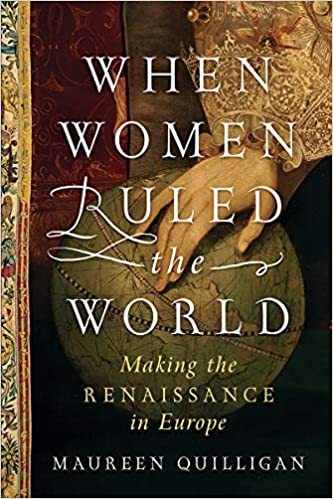
When Women Ruled the World: Making the Renaissance in Europe
Hardcover – 12 October 2021 (US) & 12 November 2021 (UK)
Sixteenth-century Europe was a time of destabilisation of age-old norms and the waging of religious wars―yet it also witnessed the remarkable flowering of a pacific culture cultivated by a cohort of extraordinary women rulers who sat on Europe’s thrones, most notably Mary Tudor; Elizabeth I; Mary, Queen of Scots; and Catherine de’ Medici.
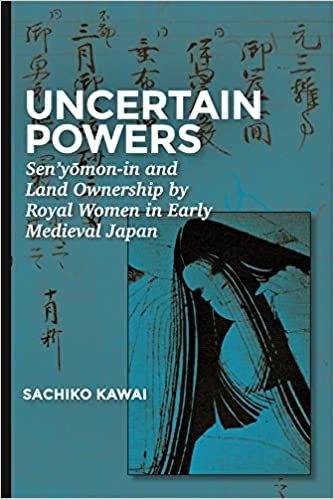
Uncertain Powers: Sen’yōmon-in and Landownership by Royal Women in Early Medieval Japan (Harvard East Asian Monographs)
Hardcover – 19 October 2021 (US) & 26 November 2021 (UK)
Uncertain Powers is an original and much-needed analysis of female leadership in medieval Japan. In challenging current scholarship by exploring the important political and economic roles of twelfth- and thirteenth-century Japanese royal women, Kawai questions the traditional view of the era as one dominated by male retired monarchs and a warrior government. Instead, the author populates it with royal wives and daughters who held the title of premier royal lady (nyoin) and owned extensive estates across the Japanese archipelago. Nyoin, whose power varied according to marital status, networks, and age, used their wealth and human networks to build temples and organise their entourages as salons to assert religious, cultural, and political influence. Confronted with social factors and gender disparities, they were motivated to develop coping strategies, the workings of which Kawai masterfully teases out from the abundant primary sources.
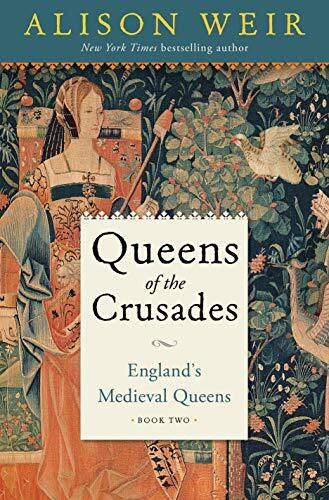
Queens of the Crusades: England’s Medieval Queens Book Two
Paperback – 2 November 2021 (US & UK)
The Plantagenet queens of England played a role in some of the most dramatic events in our history. Crusading queens, queens in rebellion against their king, seductive queens, learned queens, queens in battle, queens who enlivened England with the romantic culture of southern Europe—these determined women often broke through medieval constraints to exercise power and influence, for good and sometimes for ill.

Princess Mary: The First Modern Princess
Hardcover – 1 November 2021 (US) & 5 February 2021 (UK)Born in 1897, Princess Mary was the only daughter of King George V and Queen Mary. Despite her Victorian beginnings, she strove to make a princess’ life meaningful, using her elevated position to help those less fortunate and defying gender conventions in the process. From her dedication to the war effort, visiting wounded soldiers and training as a nurse, to her role as a peacemaker during the Abdication Crisis, Mary was one princess who redefined the title for the modern age.
Anne: Last Queen of England (Penguin Monarchs)
Hardcover – 1 November 2021 (US) & 27 April 2023 (UK)
[no info yet]
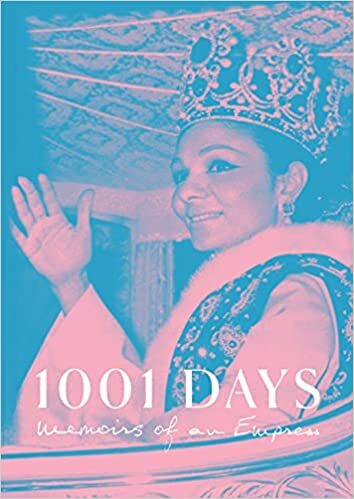
1001 Days: Memoirs of an Empress
Hardcover – 16 November 2021 (US) & 2 December (UK)
This memoir by empress Farah Pahlavi looks back on her reign over an Iran so modern it is unrecognisable today―written just a few years before the Islamic Revolution of 1979.
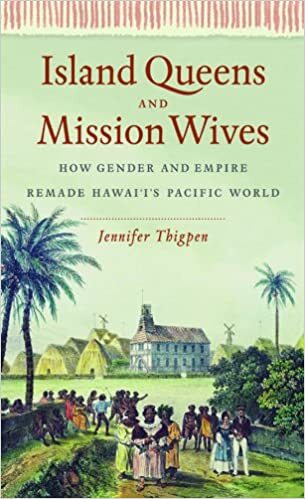
Island Queens and Mission Wives: How Gender and Empire Remade Hawai’i’s Pacific World (Gender and American Culture)
Paperback – 2 November 2021 (US) & 30 November 2021 (UK)
In the late eighteenth century, Hawai’i’s ruling elite employed sophisticated methods for resisting foreign intrusion. By the mid-nineteenth century, however, American missionaries had gained a foothold in the islands. Jennifer Thigpen explains this important shift by focusing on two groups of women: missionary wives and high-ranking Hawaiian women. Examining the enduring and personal exchange between these groups, Thigpen argues that women’s relationships became vital to building and maintaining the diplomatic and political alliances that ultimately shaped the islands’ political future. Male missionaries’ early attempts to Christianize the Hawaiian people were based on racial and gender ideologies brought with them from the mainland, and they did not comprehend the authority of Hawaiian chiefly women in social, political, cultural, and religious matters. It was not until missionary wives, and powerful Hawaiian women developed relationships shaped by Hawaiian values and traditions–which situated Americans as guests of their beneficent hosts–that missionaries successfully introduced Christian religious and cultural values.
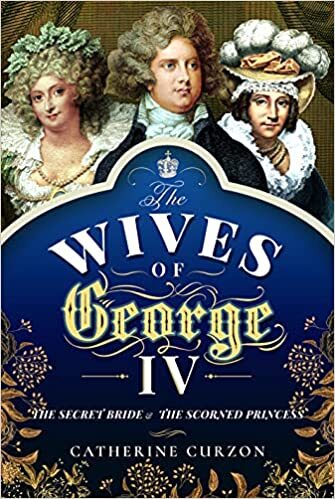
The Wives of George IV: The Secret Bride and the Scorned Princess
Hardcover – 30 November 2021 (UK) & 30 January 2022 (US)
In Georgian England, few men were more fashionable or more eligible than George, Prince of Wales. Wild, glamorous, and with a penchant for beautiful women, the heir to George III’s throne was a very good catch -or so it seemed. The two women who married him might beg to differ. Maria Fitzherbert was a twice-widowed Roman Catholic with a natural aversion to trouble. When she married the prince in a secret ceremony conducted in her Mayfair sitting room, she opened the door on three decades of heartbreak. Cast aside by her husband one minute, pursued tirelessly by him the next, Maria’s clandestine marriage was anything but blissful. It was also the worst kept secret in England. Caroline of Brunswick was George’s official bride. Little did she know that her husband was marrying for money, and when she reached her new home in England, she found him so drunk that he couldn’t even walk to the altar. Caroline might not have her husband’s love, but the public adored her. In a world where radicalism was stirring, it was a recipe for disaster. In The Wives of George IV: The Secret Bride & the Scorned Princess, Maria and Caroline navigate the choppy waters of marriage to a capricious, womanising king-in-waiting. With a queen on trial for adultery and the succession itself in the balance, Britain had never seen scandal like it.

Joan, Lady of Wales: Power and Politics of King John’s Daughter
Paperback – 30 November 2021 (UK) & 30 January 2022 (US)
The history of women in medieval Wales before the English conquest of 1282 is one largely shrouded in mystery. For the Age of Princes, an era defined by ever-increased threats of foreign hegemony, internal dynastic strife and constant warfare, the comings and goings of women are little noted in sources. This misfortune touches even the most well-known royal woman of the time, Joan of England (d. 1237), the wife of Llywelyn the Great of Gwynedd, illegitimate daughter of King John and half-sister to Henry III. With evidence of her hand in thwarting a full-scale English invasion of Wales to a notorious scandal that ended with the public execution of her supposed lover by her husband and her own imprisonment, Joan’s is a known but little-told or understood story defined by family turmoil, divided loyalties and political intrigue. From the time her hand was promised in marriage as the result of the first Welsh-English alliance in 1201 to the end of her life, Joan’s place in the political wranglings between England and the Welsh kingdom of Gwynedd was a fundamental one. As the first woman to be designated Lady of Wales, her role as a political diplomat in early thirteenth-century Anglo-Welsh relations was instrumental. This first-ever account of Siwan, as she was known to the Welsh, interweaves the details of her life and relationships with a gendered re-assessment of Anglo-Welsh politics by highlighting her involvement in affairs, discussing events in which she may well have been involved but have gone unrecorded and her overall deployment of royal female agency.
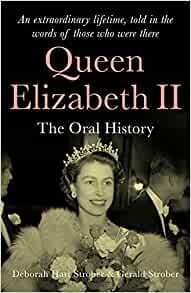
Queen Elizabeth II: The Oral History
Hardcover – 25 November 2021 (UK) & 1 February 2022 (US)
This lavishly produced hardback, with over 30 lesser-known photos, paints a full, detailed and global portrait of a life lived in service. Insightful accounts of events range from the early years of Queen Elizabeth II’s reign, the shocking death of her father and the adjustment required of a newly married couple to more recent years, with coverage of Prince Philip’s retirement and the grandchildren’s marriages and families. Featuring interviews from diverse sources, including staff to family and friends, such as Lady Pamela Hicks, Queen Elizabeth II also includes memories from crucial international figures of the twentieth century, such as Nelson Mandela. Asking questions about conflict and change and the monarchy’s journey as a colonial institution, this is a revealing view into the workings of Buckingham Palace and the strengths and weaknesses of the Royal Family. In common with the global TV success of The Crown the Strober’s rich compilation also provides a history of modern British politics. Containing a broad spectrum of views on Queen Elizabeth II from her role as leader of the Commonwealth to her personality in private, this is an extraordinary insight into the ways in which the reign of the monarch has intersected and impacted others around the world.
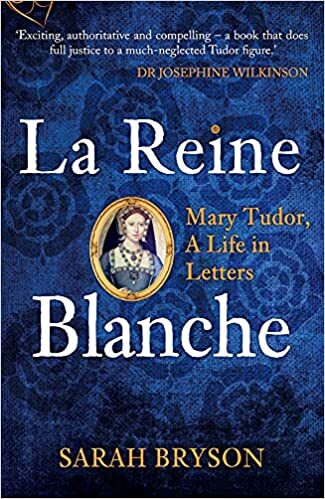
La Reine Blanche: Mary Tudor, A Life in Letters
Paperback – 15 November 2021 (UK) & 15 February 2022 (US)
Mary Tudor’s childhood was overshadowed by the men in her life: her father, Henry VII, and her brothers Arthur, heir to the Tudor throne, and Henry VIII. These men and the beliefs held about women at the time helped to shape Mary’s life. She was trained to be a dutiful wife, and at the age of eighteen, Mary married the French king, Louis XII, thirty-four years her senior. When her husband died three months after the marriage, Mary took charge of her life and shaped her own destiny. As a young widow, Mary blossomed. This was the opportunity to show the world the strong, self-willed, determined woman she always had been. She remarried for love and at great personal risk to herself. She loved and respected Katherine of Aragon and despised Anne Boleyn – again, a dangerous position to take. Author Sarah Bryson has returned to primary sources, state papers and letters, to unearth the truth about this intelligent and passionate woman. This is the story of Mary Tudor, told through her own words for the first time.
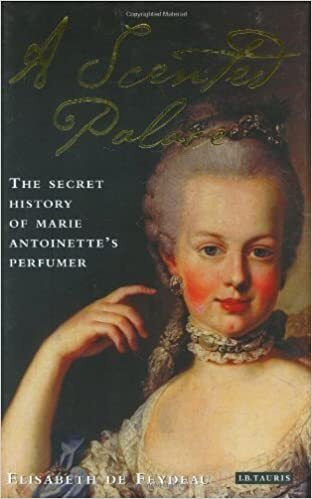
A Scented Palace: The Secret History of Marie Antoinette’s Perfumer
Paperback – 11 November 2021 (UK) & unknown (US)
Montpellier, 1748: Jean-Louis Fargeon is born into a family of perfumers and soon becomes apprentice to his father’s modest perfumery. But he dreams of the glittering court of Versailles and of becoming perfumer to the young queen, Marie Antoinette. His ambition carried him to Paris, where his boutique became one of the most elegant and well-patronised in France. Concocting sumptuous perfumes and pomades for most of the French nobility, Fargeon eventually caught the attention of the queen. After meeting Marie Antoinette in the Trianon Palace, he began creating lavish bespoke scents that perfectly reflected her moods and personality.
Crown & Sceptre: A New History of the British Monarchy from William the Conqueror to Elizabeth II
Hardcover – 4 November 2021 (UK) & unknown (US)
The British monarchy is one of the most iconic and enduring institutions in the world. It has weathered the storms of rebellion, revolution and war that brought many of Europe’s royal families to an abrupt and bloody end. Its unique survival owes much to the fact that, for all its ancient traditions and protocol, the royal family has proved remarkably responsive to change, evolving to reflect the times. But for much of its history, it also spearheaded seismic change, shaping our religious, political and cultural identity and establishing the British monarchy as the envy of the world.
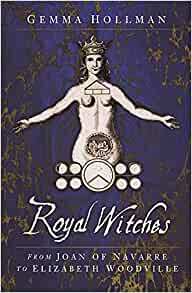
Royal Witches: From Joan of Navarre to Elizabeth Woodville
Paperback – 1 November 2021 (UK) & unknown (US)
In Royal Witches, Gemma Hollman explores the lives of these four unique women, looking at how rumours of witchcraft brought them to their knees in a time when superstition and suspicion was rife.
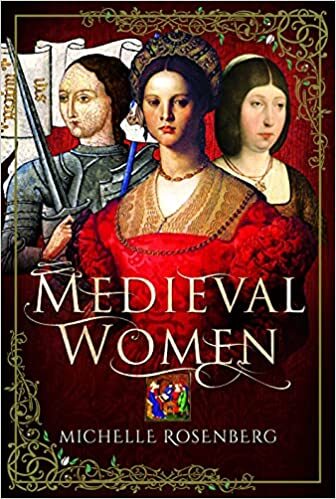
Medieval Women
Hardcover – 30 November 2021 (UK) & 30 January 2022 (US)
A jewel of a book, this latest release from one of Pen & Sword’s women historians, contains a treasure trove of medieval dramatis personae, from the more mainstream figures such as Lady Godiva and Joan of Arc to the lesser-known Crusader Queens and mystics. For the first time together, we meet two elusive Jewish medieval businesswomen, one of whom was imprisoned in the Tower of London and the other who was likely one of the richest women in the world. Meticulously researched and clearly showing the author’s keen eye for detail, this latest offering from Michelle Rosenberg builds on her reputation for bringing back to life women often forgotten from mainstream history. Relatively new figures include the elusive Virdimura of Sicily and Julian of Norwich. The medieval period saw life expectancy at around 33 years old, with the vast majority of women unable to read or write. This text weaves together a rich and broad historical tapestry of women’s stories from the fall of the Roman Empire, the invasion of the Vikings, the First Crusade, the Hundred Years War and the Black Death. It offers an intriguing insight into medieval women whose lives were deemed outstanding enough (whether through exemplary religious conduct, queenly, consort or intellectual accomplishment or scandal) by their contemporaries to record. Their ability to endure, thrive and survive during a time when most women were subordinate to the men in their lives makes them extraordinary; it also makes the loss of so many other missing stories so acute and tantalising for what our collective history has been deprived of. Only imagine what richness of tales we might have had should more women’s lives have been better recorded for posterity.
[no cover yet]
Berenguela the Great and Her Times (1180-1246) (Medieval and Early Modern Iberian World)
Hardcover – 18 November 2021 (US & UK)
This biography presents a remarkable vision of Spanish society at the beginning of the 13th century by exploring the life of Berenguela of Castile (c. 1179-1246), a queen who dominated public life for over forty years.
The post Book News November 2021 appeared first on History of Royal Women.
October 21, 2021
The Year of the Duchess of Windsor – Tour of Germany Day Twelve
The Duke and Duchess spent 13 hours on a train to reach Berchtesgaden. At the station, they were joined by Hitler’s private translator, Dr Paul Schmidt, and they were picked up by a motorcade consisting of an open-topped black Mercedes and SS-guards on motorcycles and a host of other cars. Hitler stood waiting to greet them. Wallis recalled, “His face had a pasty pallor, and under his moustache, his lips were fixed in a kind of mirthless grimace. Yet at close quarters, he gave one the feeling of a great inner force. His hands were long and slim, a musician’s hands, and his eyes were truly extraordinary – intense, unblinking, magnetic, burning with the same peculiar fire.”1 They were thrilled because Hitler addressed the Duchess with “Royal Highness”, which had been denied her in England.
Hitler told the Duke he would like to meet privately, and Wallis was left with Rudolf Hess in the drawing-room. There is no official record of what was said during this private meeting, but the Duke later recalled, “My ostensible reason for going to Germany was to see for myself what National Socialism was doing in housing and welfare for the workers, and I tried to keep my conversation with the Führer to these subjects, not wishing to be drawn into politics… In a roundabout way, he encouraged me to infer that Red Russia was the only enemy and that it was in Britain’s interest and in Europe’s too, that Germany be encouraged to strike east and smash Communism forever… I confess frankly that he took me in. I believed him when he implied that he sought no war with England…”2
They finally returned to the drawing-room to have tea with Wallis. The Duke spoke to Hitler in German, although the translator still worked his way in, and the Duke had to correct the translator several times. Hitler also spoke a few words to Wallis, and when she complimented the splendid architecture they had seen, he said, “Our buildings will make more magnificent ruins than the Greeks.”3
Afterwards, Hitler escorted the couple to their car, and one reporter noted, “The Duchess was visibly impressed with the Führer’s personality, and he apparently indicated that they had become fast friends by giving her an affectionate farewell. Hitler took both their hands in his saying a long goodbye, after which he stiffened to a rigid Nazi salute that the Duke returned.” According to Hitler’s translator, he said of Wallis, “She would have made a good Queen.”4
 Shawshots / Alamy Stock Photo
Shawshots / Alamy Stock PhotoThey then travelled to Munich, where they spent the evening at a dinner party hosted by Rudolf Hess and his wife, Ilse. The following day, they did some sightseeing in Munich before departing for Paris.
Even the Germans were somewhat confused about the reason for the trip. Afterwards, the British consul wrote, “Germans here were much puzzled about the reasons for the tour which many of them attributed to the Duke’s supposed strong pro-Fascist sympathies. This belief was strengthened by the words which H.R.H is alleged to have used to sum up his impressions of the tour, and which was rendered by Dr Ley to a recent meeting of the German Labor Front in Leipzig as follows: ‘I have travelled the world, and my upbringing has made me familiar with great achievements of mankind, but that which I have seen in Germany I had hitherto believed to be impossible. It cannot be grasped and is a miracle; one can only begin to understand it when one realizes that behind it all is one and one will.'”
The Duke and Duchess’ visit attracted the interest of the FBI. In September 1940, a report to FBI director J. Edgar Hoover said, “for some time the British Government has known that the Duchess of Windsor was exceedingly pro-German in her sympathies and connections and there is strong reason to believe that this is the reason why she was considered so obnoxious to the British Government that they refused to permit Edward to marry her and maintain the throne.”5
The enormous amount of criticism the Duke and Duchess received for this trip was something they had not expected. They were accused of being taken in by the Nazis, used for propaganda and that they had done nothing to discover the truth. The Duke knew little of the realities of the regime and he – and so many others! – only saw the economic achievements being made. Wallis probably knew even less and it was Russia that was feared above everything else. They did not have the benefit of hindsight, nor did they have any support from the British Embassy, which had been expressly told to ignore the visit.
The Duke later said, “I acknowledge now that, along with too many other well-meaning people, I let my admiration for the good side of the German character dim what was being done by the bad. I thought that… the immediate task… of my generation… was to prevent another conflict between Germany and the West that could bring down our civilization… I thought that the rest of us could be fence-sitters while the Nazis and the reds slogged it out.”6
The post The Year of the Duchess of Windsor – Tour of Germany Day Twelve appeared first on History of Royal Women.
October 20, 2021
The Year of the Duchess of Windsor – Tour of Germany Day Eleven
On 21 October, the Duke of Windsor inadvertently caused a bit of an embarrassment for his hosts. After visiting a factory, he decided that he would like to see the Württemberg Royal Palace in Stuttgart, where he had spent some weeks in 1913 with the King. Unbeknownst to him, the palace was now a museum, and it was currently hosting an “anti-British colonial exposition.” The New York Times reported, “The Duke seemed unmoved. Making no remarks and asking no questions, he displayed a courteous but not very cordial interest. The various functionaries making up his brown-shirt entourage withdrew discretely to corners and tried to discover who should be held responsible for the blunder.”1
The Duke also visited an automobile works and the Daimler-Benz workers’ colony, where workers are permitted to buy their own five-room home over the course of twenty years at a rate of 40 marks monthly. He also met with Mercedes racing car drivers Rudolf Caracciola, Manfred von Brauchitsch and Richard Seaman. The Duchess joined the others for lunch in a 15th-century council house at Esslingen. Afterwards, they both visited the Index Company machinery works nearby.
The evening was spent with workers and peasants in the great Stuttgart municipal auditorium at a Strength Through Joy festival. There was a pageant and a play. Afterwards, they departed in their private train car and headed for Berchtesgaden, where a meeting with Adolf Hitler was scheduled for the following day.
The post The Year of the Duchess of Windsor – Tour of Germany Day Eleven appeared first on History of Royal Women.
Royal Wedding Recollections – Archduke Charles of Austria & Zita of Bourbon-Parma
On 21 October 1911, Zita of Bourbon-Parma married the future Emperor Charles I of Austria. They had known each other since childhood, and Zita’s aunt, Maria Theresa of Austria, was also Charles’s step-grandmother. Their engagement had been announced on 13 June 1911 and was very much welcomed. After the betrothal ceremony, Charles told Zita, “Now we will help each other to reach heaven!”1Emperor Franz Joseph I of Austria had lost his only son to suicide in 1889, and the current heir to the throne was Archduke Franz Ferdinand, who had married morganatically and whose children were excluded from the succession. Thus, Archduke Charles was second in line to the throne, and Zita met all the requirements.
In the months preceding the wedding, Zita spent a lot of time preparing for her future position – even having an audience with the Pope, who greeted her as a future Empress. When she protested, saying that Franz Ferdinand was the heir, the Pope told her, “No, Charles will be the heir.”2
The wedding took place at Schwarzau Castle in Reichenau. Zita received a pearl necklace from her future husband and a diamond tiara from the Emperor. Two whole rooms were filled with the wedding presents the couple received. The guest of honour – the Emperor – arrived in St Egyden on a special train and was taken by car to the castle, where he arrived at 11 in the morning. He was greeted by Charles at the bottom of the steps to the castle as Zita, and her mother waited at the top of the steps. He greeted Zita’s mother with a kiss on her hand, and he kissed Zita on both cheeks.
Embed from Getty ImagesEmbed from Getty ImagesEmbed from Getty ImagesEmbed from Getty ImagesZita was dressed in an ivory satin dress stitched with silver thread, a three-metre long train decorated with the Bourbon lily and the tiara she had been gifted by the Emperor. Her bridal veil was a Braganza family heirloom. Charles was dressed in the uniform of a Cavalry captain. Although a seat had been reserved for the ageing Emperor, he remained standing throughout the ceremony. The wedding ceremony was performed by Monsignor Gaetano Bisleti, a representative of the Pope, who would be created a Cardinal the following month. After the ceremony, the most prominent guests went out onto the balcony, where photos and footage were made of the happy occasion. Afterwards, the Emperor toasted to their happiness during a wedding breakfast before departing for Vienna.
Charles and Zita would turn out to be the last Emperor and Empress of Austria, and the footage of their wedding is a small glimpse into the lost splendour of that world.
The post Royal Wedding Recollections – Archduke Charles of Austria & Zita of Bourbon-Parma appeared first on History of Royal Women.
October 19, 2021
The Year of the Duchess of Windsor – Tour of Germany Day Ten
On 20 October, the morning was spent inspecting the party congress structures. The New York Times reported that “the Duke was frank in expressing his astonishment at the tremendous size of the halls and the stadiums already completed and the ambitious character of the buildings still in process of construction.”1
The Duke also seemed rather annoyed with the photographers, and a secret police agent finally removed the photographers and threatened to imprison them. A visit to a “Strenght Through Joy” village followed next. This village was devoted to entertaining groups of touring workers and also worked during party congresses. The village consisted of long rows of wooden beer halls, and the Duke and Duchess visited nearly every hall.
Day eleven coming soon.
The post The Year of the Duchess of Windsor – Tour of Germany Day Ten appeared first on History of Royal Women.
October 18, 2021
The Year of the Duchess of Windsor – Tour of Germany Day Nine
Read about day seven and eight here.
The Duke and Duchess arrived in Nüremberg to a royal welcome. In their hotel, the Deutscher Hof, they were given the suite of Hitler’s party congress. The Duke inspected a black-uniformed special Labor Front troop in front of the hotel before withdrawing to the room. A smaller troop stood at attention in the lobby all throughout the evening.
During the day, the Duke and Duchess of Windsor visited a labour camp “to see gymnastics” and the Meissen porcelain works, where Wallis was presented with a gold lacquer vase.
The first visitor of the day was the Duke’s first cousin once removed, Charles Edward, the Duke of Saxe-Coburg and Gotha, who appeared in full brown-shirt uniform. Charles Edward had written to the Duke immediately upon learning that he was coming to Germany, “Dear David! I hear that you are coming to Germany… I naturally would be delighted if you could take this opportunity to see me; perhaps I could introduce you to a couple of interesting personalities whom you otherwise wouldn’t meet during your trip.”1
The Duke of Saxe-Coburg and Gotha hosted an elaborate dinner party in the evening for the Duke and Duchess of Windsor at their hotel with over 100 guests in attendance. The Duchess’ place card at the dinner table bore the German equivalent of “Her Royal Highness.”2
The post The Year of the Duchess of Windsor – Tour of Germany Day Nine appeared first on History of Royal Women.

